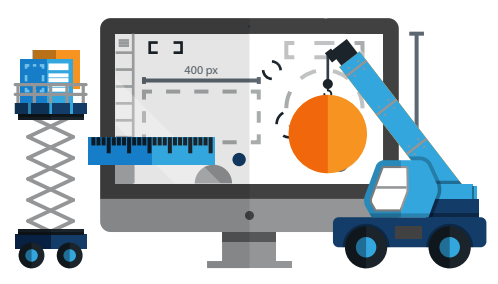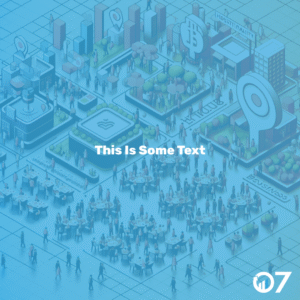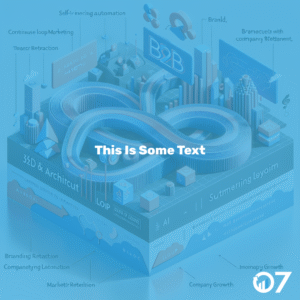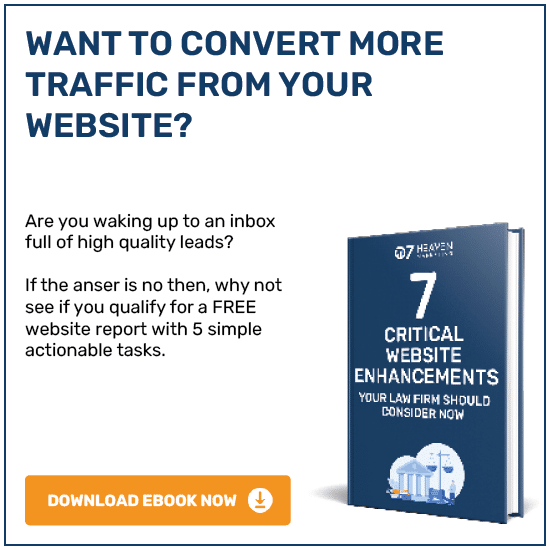If you are looking to create your own website but do not know where to start, we have created a downloadable eBook to help. Our “10 Things to Consider When Creating A Website” PDF helps you understand the first steps to designing your website.
Designing your own website can at first be very daunting, often people are unsure about where to start. Whether it is for a small business or a personal project you want your website to be looking great. Well-built and designed websites can also generate new business at extreme paces.
Read on to find out more…
1) Choosing Your Domain Name
A domain name is the naming system for giving addresses to web servers and web pages. It locates an organisation on the Internet, much like a house address. Each part of the domain name provides specific information, with this information enabling web browsers to locate the page.
Make it brandable. Your domain name is something which must be memorable for your company and customers, along with reflecting/representing your brand and being easy to spell. This means that punctuation is a big no in domain names.
Keywords are also important within the domain name dependent on the services your company offers. For example, if you are a repairs company then use the word ‘repair’ within your domain name. This helps to improve your search engine ranking and increase traffic to your site.
There are hundreds of sites out there, which you can use to set up your domain name. Prices start from £9.99 for 2 years. Therefore, the domain name prices are cheap yet essential for you and your company.

2) Choose A Host
Web hosting is a service which allows organisations and individuals to post a website or webpage on the Internet. Think of it as renting space on the Internet. There are hundreds of web hosting providers out there, and their jobs consist of providing the technologies and services needed for a website or webpage to be viewed on the internet. Websites are hosted/stored on servers.
When Internet users want to view your website all they need to do is type in your web address, their computer will then connect to your server for them to see your site.
Your domain name becomes especially important when choosing a host, as many hosting companies require that you own your domain name to host with them.
Choosing the right host is also vital to how you want to portray your company on the Internet. In the forefront of your mind you should be thinking about the nature of your business, do you want a media rich site? Or are you looking for a reliable, responsive host?
You should also consider what back up and security options are offered from different hosts dependent on what you are looking for. Remember to always read reviews before making a final decision.

3) Which CMS Software Will You Use?
CMS (Content Management System) is a software which allows you to create, edit, manage, and maintain website pages on a single interface. CMS gives companies the ability to easily build websites for themselves and clients.
Having a CMS will make everything a lot easier when running your business through its ability to help you manage your websites content without messing around with the code.
CMS will save you time and keep your site looking professional. With a CMS, you can build pages in half the time to build from scratch. It also helps you to stick to a template to keep all of your site pages looking the same.
Search engine results are extremely important when having your own website, you want people to find your site through search engines. CMS can improve your SEO through allowing you to optimize your titles, content depth, keywords and meta descriptions. CMS therefore helps you to keep your content fresh which is extremely important when it comes search engine rankings.
As with domain names and hosting, there are millions of Content Management Systems out there, but it is down to you to decide which one is best for you and your company by doing research.

4) Know Your Audience
Knowing your audience will help you identify the key features your site must include. Your audience must be at the forefront of your mind during the whole production process. You will have to make sure that you’re including everything that your target market would want to see on your site.
Knowing your audience will have an impact on the design of your site, the content you post and the tone of voice you are using. It will also have an impact on the site navigation, if your target audience is the older generation then your site navigation is going to be much simpler and easier to use than if it were d at the younger generation.
Knowing who your target audience is also has a massive impact on the traffic you will receive on your site. Knowing your audience means knowing what keywords they may type into search engines. Having a good insight into who your audience is will help you to determine the best places to earn links to your website.
Once you know who your audience is you can begin to look at the design of your site.

5) What Do You Want Your Site To look Like?
In the website development process, one of the most important things to consider is the design. Modern Internet users of today like to see clean designs of a good quality. Clean designs are better for engaging with visitors on your site, visitors are more likely to read the content you are offering if the design of your page appeals to them.
Layout is also a huge factor within the design aspect of your website. With site visitors only concentrating on the first two paragraphs, and only scanning the first few words of subheadings, bullet points, and paragraphs. It becomes important for you to then think about your target audience and what sort of layout would keep them reading.
The design of your website is also especially important when creating trust with visitors on your site. 94% of people claim that the design of a website is the reason they do not trust certain sites. You can create trust with your visitors by including links to media coverage, displaying client logos, and showcasing social media followers.
Having an effective website design is key to providing a positive user experience, therefore make sure you know what your target audience want to see, and provide that to them to increase more traffic to your site.

6) Which Colours Will You Use?
Much like design, colour schemes are key to providing a positive user experience. The colour scheme can evoke different emotional responses from the visitors on your site.
An effective colour scheme will make your website appear more professional and make your site more trustworthy.
Colour is a powerful design tool. It is the first thing a visitor on your site will notice, with a good colour scheme having the ability to turn a visitor into a customer.
The colour scheme used on a site has the ability to evoke different emotional responses from viewers. The colour scheme you use must reflect your brand and be what your audience is looking for. You must decide whether you want to use cool colours (blue, green, grey) to give a calming effect, or warm colours (red, yellow, orange) to convey more excitement.
When choosing a colour scheme for your site, you should always spend time researching which would be best for your target audience and have different variations before coming up with a final decision.

7) How will your Branding Look?
With how technology is advancing, people have remarkably high expectations of what they want from a website. Visitors on websites have been becoming more judgmental than ever before. 40% of people leave a site if it takes more than 3 seconds to load, along with leaving if the branding is blurry or unprofessional.
Visitors look for professionally designed logos, therefore you must ensure that your logo and branding is modern and appealing to visitors. Visitors look for websites with professional branding which they can put their trust in. You must ensure that your branding is of a good quality so that visitors can put their trust into your site.
Your branding must also tie in with your design and colour scheme. They must all bounce and reflect of each other to ensure your level of professionalism.
You also want your branding to stand out, with all the millions of websites out there, you want people to remember and come back to your site. Clean and well-designed branding is what catches the viewer’s eye and gives visitors a clearer understanding of your brands voice and identity.

8) What Is The Site Navigation Going To Be Like?
Website navigation is a key component to every website. Website navigation is the gateway into different sections of content within your site. Visitors on your site want to find content easily. If they are unable to find what they are looking for then they will leave your site almost instantly.
It is also extremely important to keep your site navigation consistent. You want to make it as easy as possible for visitors on your site to navigate themselves around. Therefore, it should always be in the same position, with the same font and colours.
Section names should also clearly state what lies behind them. It is important to stick to obvious names to make it easier for visitors on your site to easily find what they are looking for.
You must also always consider your target audience when thinking about your site navigation. Your site navigation should very much reflect the age of your target audience. If your target audience is of the older generation then it should be even easier to use than if it is for the younger generation.
Site navigation can be improved by adding a site map. You can also improve loading time by streamlining navigation and eliminating unnecessary/underperforming pages.

9) Call-to-Actions (CTA)
Calls to actions (CTA) are instructions that provoke immediate responses from visitors on your site. They usually use an imperative verb such as “call now” or “download”. They are an encouragement and promotion to persuade customers to contact/interact with your business.
You should try to include at least one CTA on every page to try and gain more interaction with the visitors on your site. The CTA’s displayed on the pages within your site should be relevant and appropriate to the viewers level of engagement with your company.
You must also consider where you are placing your CTA, the location can impact the performance and amount of clicks it receives. It must also contain action-orientated verbs to provoke immediate reactions.
The colour used on your CTA button is also important, it must be noticeable. With orange often working best for most companies.

10) Your Social Media Presence
Almost every Internet user of today has some form of social media profile. Therefore, it is a necessity that when creating an online website for your business, you must also be active on social media.
Social media should be used as a tool for your company to interact with your customers/visitors. Social media also allows visitors to share and promote your brand/company through their own accounts. This can be great for building trust and making your site more reliable.
Having an active social media presence also allows you to add social media sharing icons to your web pages. This straight away makes your site a more reliable source as you are active and reliable. Having social media sharing icons on your web pages also allows people to share what they have seen, generating more traffic to your site.
One of the main benefits to using social media is that most platforms are free. Allowing you to market your company on the Internet and interact with consumers, without it costing you or your company anything.

For further insights and guidance, we invite you to explore our blog at 07hm.co.uk/blog. Here, you’ll find a wealth of information tailored to the needs and challenges of SMEs navigating the digital landscape. Additionally, if you have specific questions or need personalised advice, don’t hesitate to reach out to us via email at info@07hm.co.uk or telephone on 01702 410663.






